Put down your tools and throw away those molds — 3D printing means customized complex geometries can be produced en masse at a fraction of the cost.
From watch cases and spikes on running shoes, to rocket engine components and implants for the human body, 3D printers can be used to make virtually anything out of virtually anything. Materials are printed layer-by-layer into such intricate devices that designers and manufacturers are being forced to rethink their entire approach to construction.
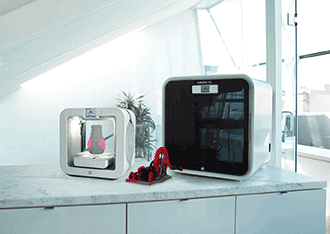
The new Cube 3D printer and the CubePro Duo 3D personal printer, both from 3D Systems. Photo courtesy of 3D Systems.
With 3D printing, complexity comes free, and users are able to avoid the costs associated with traditional manufacturing, such as tooling, fixtures and the need for assembly. Design changes and iterations also become hassle-free, and the time to market can be shortened for new or updated products.
“Elimination of tooling can have a massive impact on budgets and time lines,” said John Murray, CEO and president of Concept Laser Inc. “Freeing engineers to design without constraints can reduce the design cycle and produce parts that are far superior.”
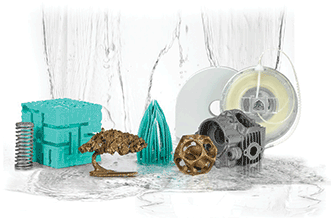
Infinity rinse-away support material is a water-soluble filament that enables printing of parts with rinse-away supports. Rinse-away supports are easy and fast to remove for a great-looking finished print. Since the supports rinse away, users no longer have to deal with “support stubble” left behind by old breakaway supports. Photo courtesy of 3D Systems.
It was in 1983 when Charles Hull was working in a small laboratory in California that he printed the first plastic model from photopolymers cured by UV light. Three years later, he patented the process as stereolithography. Hull founded 3D Systems Corp. in Valencia, Calif., and the world of commercial rapid prototyping was born.
In the 30 years since, the number of 3D printing companies has increased dramatically, transforming what began as a technology exclusively used for prototyping to one that is advanced enough to manufacture end-use products for a wide variety of industries and markets.

Back braces can be tailor-made to help treat conditions such as scoliosis, an abnormal twisting and curvature of the spine. Photo courtesy of 3D Systems.
Today, 3D Systems is a leading provider of 3D digital design and fabrication solutions, including 3D printers, print materials, and on-demand custom parts for professionals and consumers ordered via the cloud. Just submit your design online, choose the material, select the process, and one of its global Quickparts centers will print and deliver it right to your door.
According to the company, cloud-based manufacturing is a means of democratizing 3D printing that can enable small establishments to compete with the deeper pockets of larger companies.
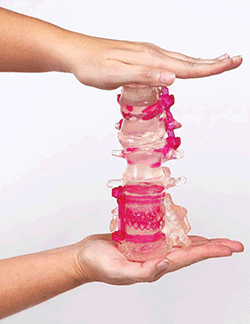
Medical model of a spine. Photo courtesy of 3D Systems.
To date, industries with the greatest
R&D budgets have been the biggest proponents of 3D printers. The aviation and aerospace industry in particular has discovered the potential to address their spare-part needs with this technology, which is ideal for producing cost-effective, out-of-production aircraft spare parts on demand.
NASA even released news of the first 3D-printed object in space in November 2014, which it says will pave the way to future long-term space expeditions.
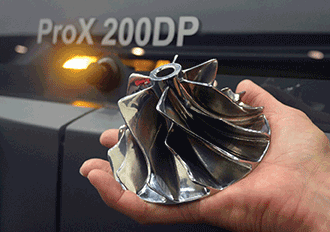
Direct metal printing gives manufacturers the ability to create highly intricate metal parts that would be impossible to manufacture in any other way. Photo courtesy of 3D Systems.
The print head faceplate was designed on Earth and sent to a printer onboard the International Space Station, demonstrating the enormous potential for building tailor-made tools for any unexpected repairs, as well as giving astronauts a greater degree of autonomy and flexibility.
The first objects built in space are set to be returned to Earth this year for detailed analysis and comparison to the identical ground control samples made on the flight printer prior to launch. This is to verify that the 3D printing process works the same in microgravity as it does on Earth.
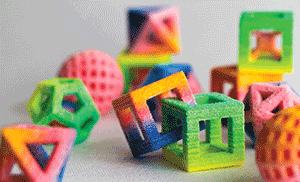
Even food such as sugar can take on brand new forms, pushing the horizons of culinary art. Photo courtesy of 3D Systems.
Another forward-looking industry is the medical sector, in which patient-specific implants and surgical guides are increasing patient comfort and reducing surgical and recovery times.
“Procedures that require implants that are customized for a specific patient give the implant manufacturer the ability to produce a highly customized part for individual patients with minimal lead time,” Murray said. “Lattice and foam structures can be tailored such that the modulus of the part or a portion thereof more closely matches that of the patient’s bones. All of this because the designer can now think outside traditional design constraints.”
Surgeons can evaluate and rehearse their surgical approach on practice body parts made to the exact measurements of the patient.
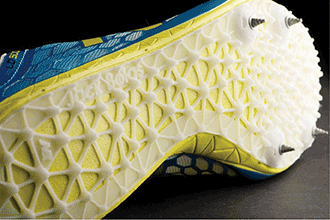
The sole of a running shoe with a custom spike plate designed based on an individual runner’s data and manufactured with plastic laser sintering from EOS. Photo courtesy of New Balance.
“Did you know that nearly every in-the-ear hearing aid today is 3D printed? They are made to measure to each individual patient’s anatomy, 3D printed and then the electronics are simply inserted in the final stage,” said Buddy Byrum, vice president of product management at 3D Systems.
This type of hybrid manufacturing, wherein additive and subtractive workflows are merged, is the latest trend in 3D printing, enabling an extension of the scope of products being developed. Depending on the materials, 3D-printed parts can be painted, dyed, sanded, tempered, plated and more with post-production techniques.
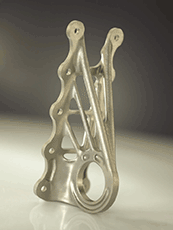
A titanium bracket made with LaserCUSING for aircraft manufacturer Airbus SAS. Photo courtesy of Concept Laser.
“Critically, the technology removes the need for scale to be profitable. Because there are no expensive tooling costs or set up time with 3D printing, the per-unit cost to print one object is roughly the same as the per-unit cost to print 1 million,” Byrum said. “That allows manufacturers to cater to niche or ‘long tail’ markets with small batches of specialty products.”

Melting metal and fusing plastic
Direct metal printing is one of the latest advances in 3D printing. The ability to manufacture highly complex, precision components in fully dense metals is expanding the limits of what is possible in industries such as aerospace, automotive and health care, where performance and functionality are paramount.
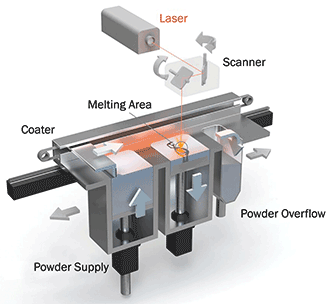
The LaserCUSING process at Concept Laser. Photo courtesy of Concept Laser.
“Designers and engineers are now able to utilize 3D printing to create metal parts with intricate, internal structures — such as conformal cooling channels — that would be impossible to manufacture any other way,” Byrum said.
While there are many approaches to 3D printing, the world leader in laser-sintering technologies, EOS GmbH (with global headquarters in Krailling, Germany and its main U.S. office in Novi, Mich.), provides a powder-based layering method. In this case, a thin layer of plastic or metal powder is spread across the build area, then fused together using laser light in the shape of a cross section of the model being printed or additively manufactured.
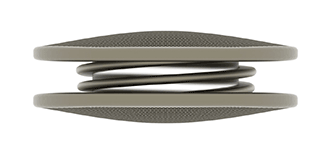
Tsunami srl, based in Modena, Italy, has built a spinal disc prosthesis that acts as a vertebral spacer in a “one-shot” manufacturing process using laser melting technology. This solution eliminates the need for downstream assembly processes. Photo courtesy of Concept Laser.
The EOS system then lays down another layer of powder, and the laser once again melts the next cross section. The process is repeated until the entire part is completed.
“Industrial 3D printing eliminates the costs associated with tooling and molds since it doesn’t require them,” said Andrew Snow, senior vice president of EOS of North America. “For the same reason, it provides opportunities for inexpensive redesign as customer needs and demands change.”
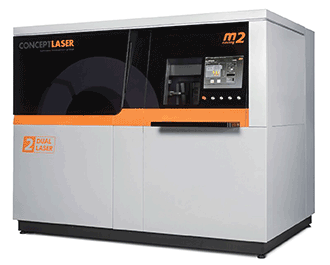
M2 from Concept Laser. Photo courtesy of Concept Laser.
At Concept Laser GmbH in Germany, powder materials made from stainless steel, hot work tool steels, cobalt-chromium alloy and nickel-based alloys, as well as reactive powder materials such as aluminum and titanium alloys, are fused using the company’s LaserCUSING process. Precious metals, such as gold or silver alloys, are also used in the dental and jewelry markets.
Although the catalog of usable materials continues to increase (3D Systems, for example, prints in more than 120 materials, from heat-resistant nylons to flexible elastomers to stainless steel), and with improvements in the printers’ speed and accuracy, Snow is quick to point out that the biggest challenge to the market is getting industrial manufacturers to change the way they think.
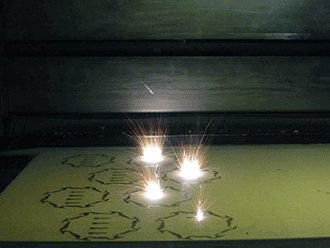
Direct metal laser sintering (DMLS) from EOS in action, building rear bicycle hub drive assemblies for Kappius Components LLC. Photo courtesy of Harbec Inc.
Since this method of additive manufacture (AM) enables mass customization on a level that is too expensive or simply isn’t possible with traditional manufacturing processes, customers are embarking on an entirely new way of manufacturing.
But rethinking an entire production process — from design to development to supply chain to manufacturing to distribution — often means replacing or augmenting manufacturing methods and industrial workflows that have remained largely unchanged for decades, if not centuries. It is little surprise that some manufacturers are reticent.

The medical impact of 3D printing brings patients the ultimate in tailor-made implants. Photo courtesy of Materialise.
Murray predicts it will take some years for AM to replace existing manufacturing processes in a large-scale fashion, but one of the most important efforts the educational system can undertake is to provide specific training, which will give university students a big jump start in their careers.
“What engineers learned 15 years ago may now be obsolete. Designing for traditional processes creates compromises,” Murray said.
“There is a huge demand for creative engineers who have been formally trained and understand the impact of additive manufacturing. Engineers can free themselves from the traditional constraints and innovate at levels previously unheard of.”
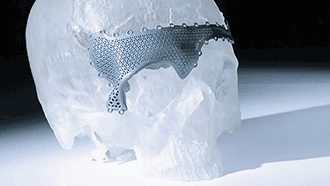
Stereolithography on a large scale at Materialise. Photo courtesy of Materialise.
Bart Van der Schueren, executive vice president at Materialise NV, headquartered in Leuven, Belgium, echoes the sentiment that industry needs to catch up with what 3D printers can do. To that end, the 3D software and service provider set up its Co-Creation Lab to help companies learn about the possibilities of 3D printing. The program helps to create and find projects that take advantage of the benefits the technology offers.
“If companies create parts according to the constraints of traditional manufacturing, they are not going to create parts that truly take advantage of 3D printing,” Van der Schueren said. “For example, thanks to 3D printing, a product that might be composed of seven different parts when traditionally manufactured could be designed as one part containing integrated functionality when 3D printed.”
Although there will always be a need for both 3D printing and traditional manufacturing, there’s no doubt that 3D printing is driving innovation across nearly every industry. And as the technology becomes more widely established, we will get better at identifying which products best suit which method and where they may benefit from the integration of both.
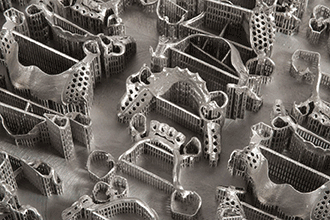
An EOS DMLS build platform full of patient-specific dental partials demonstrates how laser sintering promotes mass customization. Photo courtesy of EOS.
The message from 3D printing promoters is to overcome fear of the unknown and any organizational resistance to change. The reality is that the 3D opportunity is here now, and companies in every sector should be aggressively looking into how to leverage these new capabilities to boost their competitive advantage.
“The real choice facing manufacturers today is whether 3D printing will help them disrupt their industry,” Byrum said, “or whether they will be disrupted by 3D printing.”